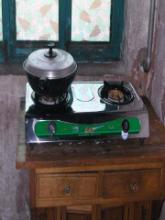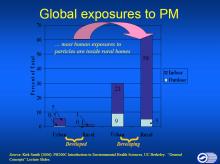- Field research in Jilin province, China
- Use of nephelometer in rural field setting
- Characterization of indoor air quality and driving factors
- Case study: three village-scale clean energy interventions
Conclusion:
- nephelometers promising, but must be used with caution
- High-humidity samples or dense, poorly mixed plumes create nonsystematic optical distortion
- Conventional measures of central tendency sensitive to distortion when high-humidity samples are not censored
Indoor air quality and driving factors in a rural Chinese village
- Time-resolved CO and PM data enable characterization of peak pollution periods.
- Diversity of fuels within single village facilitate investigation of fuel- and stove-related factors as well as tobacco smoking as determinants of indoor air pollution.
Though 24-h CO well within standards, a substantial fraction (27%) of peak 1-h episodes exceed WHO’s 1-h guideline & outliers surpass OSHA’s evacuation threshold. Short-term resolution is critical for characterizing acute risks posed by CO exposures in rural kitchens.
Adoption of “improved” cooking fuels does not suffice to reduce indoor air pollution where heating dominates fuel use. Health-oriented interventions limited to provision of improved cooking fuel are insufficient in cold climates.


